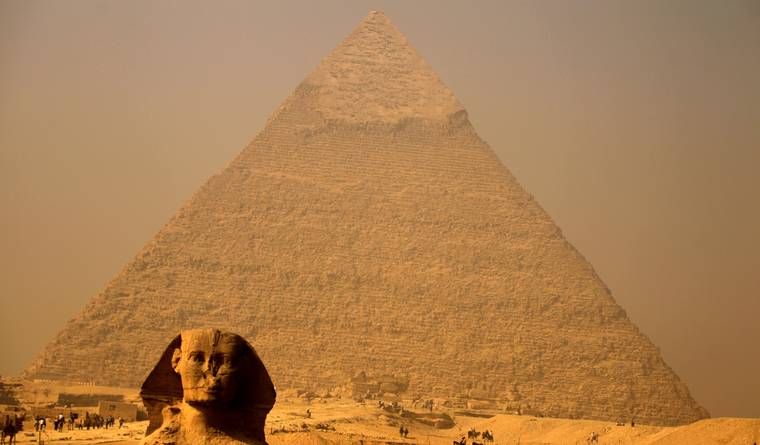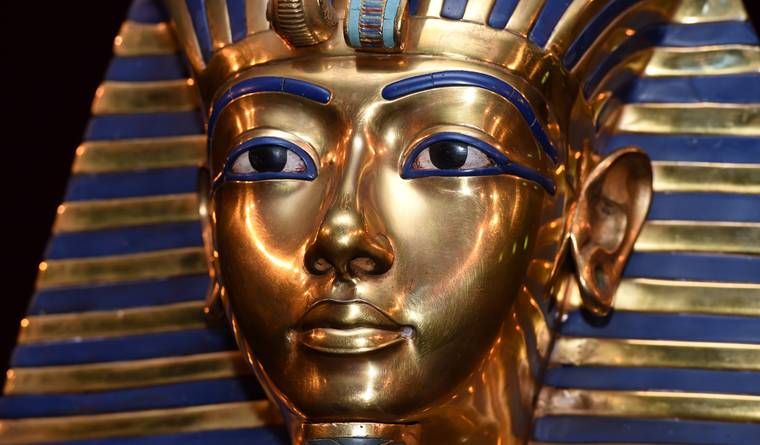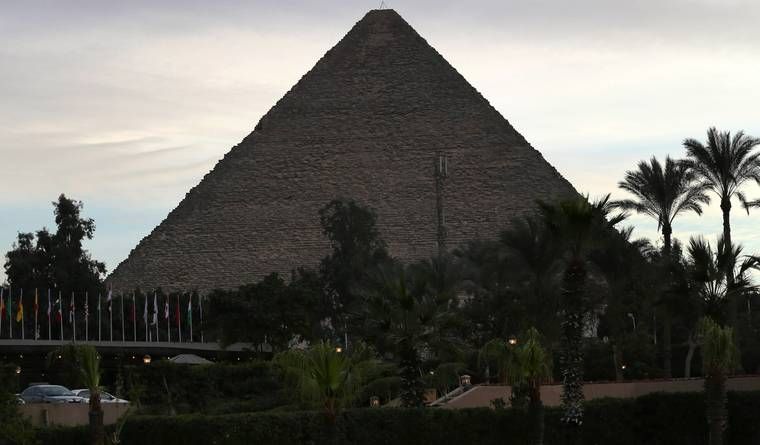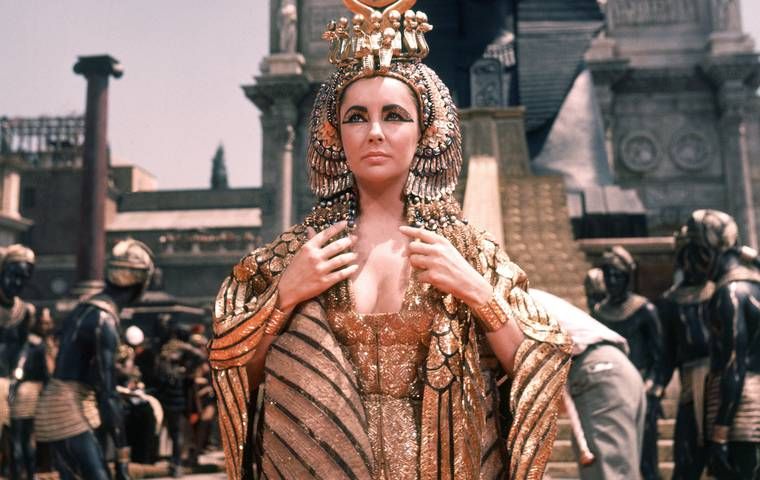4 Mysteries From Ancient Egypt We Still Can't Figure Out
The Ancient Egyptians ruled a significant chunk of the world for almost 3,000 years, and left behind a rich legacy of art, architecture and mythology. But Ancient Egypt also left behind a few mysteries that archeologists and scholars still haven't been able to solve, even thousands of years later. Here are some of the enduring mysteries of Ancient Egypt.[CN]
古埃及统治世界的重要分支已有3000多年,留下了艺术,建筑,神学等文化遗产。同时也留下了建筑学家和学者们无法解决的难题,即使时隔千年后。以下是这些古埃及长年未解之谜。
1. What did ancient Egyptians look like?[CN]
1. 古埃及人长什么样?
Despite the mummies, statues and engravings that the ancient Egyptians left behind, there is still much controversy over just what, exactly, they looked like. One thing's for certain though — despite what you might believe about them given Hollywood's whitewashing of Egyptians, the residents of ancient Egypt weren't white. [CN]
除去古埃及人留下的木乃伊、塑像、雕刻之外,古埃及人到底长什么样也颇有争议。但有一件事可以确定- 经好莱坞对埃及人的粉饰,不管心目中的埃及人是什么样,古埃及人反正不是白人。
According to Slate, they were probably a range of colors, and "neither white nor black" by our contemporary understandings: "Ancient Egypt was a racially diverse place, because the Nile River drew people from all over the region. Egyptian writings do not suggest that the people of that era had a preoccupation with skin color. Those who obeyed the king, spoke the language, and worshipped the proper gods were considered Egyptian."[CN]
根据石板记载,他们可能是混色人种,照我们当前的理解,既不是白人也不是黑人:古埃及是一个多种族的国家,因为尼罗河吸引了来自各地区的人们。埃及文书没有表明那个年代的人们对肤色持有成见。效忠国王,讲埃及语,敬真神即是埃及人。
2. How were the pyramids built?

Source: PATRICK BAZ/Getty Images
Ancient Egypt's massive pyramids are another element of their legacy that has long puzzled the experts. Just how, exactly, did a society with no modern construction equipment manage to transport the giant, heavy stones needed to build the enormous pyramids? According to recent research by physicists at the University of Amsterdam, part of the answer may be wet sand.
"It turns out that wetting Egyptian desert sand can reduce the friction by quite a bit, which implies you need only half of the people to pull a sledge on wet sand, compared to dry sand," study lead author Daniel Bonn told LiveScience. An ancient wall painting also seems to depict Egyptians wetting the sand as they pulled a sledge bearing a giant statue, offering more evidence that water may have been part of the arduous and complicated process of building the ancient pyramids.
3. How did King Tut die?

Source: Hannes Magerstaedt/Getty Images
The young King Tutankhamun has fascinated historians since his tomb was discovered in 1922, but the specifics of his life — and death at the age of 19 — remain somewhat of a mystery. A longstanding theory that he died in a chariot crash was seemingly debunked when scans of his mummified body revealed that he had a "partially clubbed foot" that would have made it impossible for him to stand on his own, reported the Independent in 2014.
The new research also revealed, through genetic analysis, that Tutankhamun's parents were likely brother and sister, and he may have died "as a result of genetic impairments."
4. What's hidden inside the Great Pyramid of Khufu?

Source: Jon Gambrell/AP
The Khufu pyramid, the largest of the three pyramids at Giza, may actually contain some hidden secrets. A 2015 thermal scan of the Great Pyramid indicated that there were "thermal anomalies" within the structure, reports the Guardian, though it's unclear what, exactly, that might mean.
A statement released about the results of the scans said the anomalies could mean many things: "To explain such anomalies a lot of hypothesis and possibilities could be drawn up: presence of voids behind the surface, internal air currents," reported the Guardian. There could even be an as-yet-undiscovered hidden tomb, but the project, which is expected to last through the end of 2016, hasn't drawn any conclusions yet.
早在80年代,我一个月去开罗几次。我有幸通过同僚认识了Zahi Hawass,了解到了很多埃及历史,也进入了不少金字塔。很不幸的是,据说他偷了不少古器,被办公室开除了。撇去他有罪与否不说,他人还是很不错的,也是不错的古埃及专家。从他身上我学到古埃及历史的光辉一面。Zahi,无论你身在何处,希望你一切都好。
Aj Corson
在我看来,纯种埃及人被清洗掉了或者净化到了其他文化当中。没有真正意义上的“古埃及人”。未解之谜就是这么来的。大部分的信仰被推翻了,在这些清洗运动中先人的秘密就丢失了。我们今天只能通过他们的艺术,抑或被其他文化吸纳并流传的部分(比如罗马就干过不少这事)。我看古埃及人哪有黑白之分,以艺术为生。我喜欢埃及艺术,从他们的文化看,他们该是红棕色人种。(某种程度上这个是靠谱的,考虑到他们的生活环境和穿衣风格)。他们是确切的人类,他们创造了如艺术般的文化就是佐证。深棕色皮肤的埃及人又是怎么来的呢?可能是从他们艺术的少数形式而来的。更多的是描绘着红棕色的人群。这就是我选修他们艺术的原因了。有些秘密理应长存,他们的存在是有原因的。
他们人长得似乎很漂亮。当然了,沙也是被风化多年了(河边的沙也是如此,冲洗翻滚)被磨成了小圆球一般,又称“弹子”。加水可以润滑弹子表面,增强其表面圆滑。这些人不仅漂亮,他们更是出类拔萃。他们用上千年来完善他们的手工。说是外国人帮他们建造了金字塔简直就是侮辱他们的智商和技术。






















